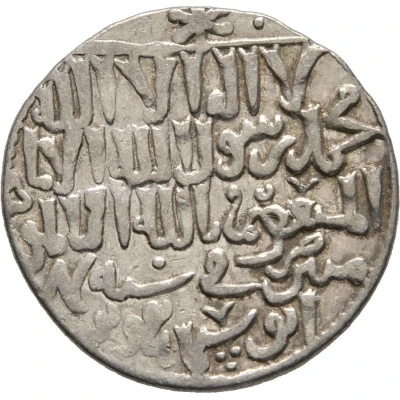


Dirham - Kaykhusraw III
| Silver | 2.99 g | 23 mm |
| Issuer | Rûm Sultanate |
|---|---|
| Sultan | Kaykhusraw III (1266-1284) |
| Type | Standard circulation coin |
| Years | 664-672 (1265-1284) |
| Calendar | Islamic (Hijri) |
| Value | 1 Dirham (0.7) |
| Currency | Dinar (1016-1308) |
| Composition | Silver |
| Weight | 2.99 g |
| Diameter | 23 mm |
| Shape | Round (irregular) |
| Technique | Hammered |
| Demonetized | Yes |
| Updated | 2024-10-05 |
| Numista | N#154095 |
|---|---|
| Rarity index | 80% |
Reverse
Inside a beaded ring, the titulature of the sultan.
Script: Arabic
Lettering:
السلطان الأعظم
غياث الدنيا و الدين
أبو الفتح كيخسرو
بن قلج أرسلان
Translation:
Al-Sultan Al-A'zim
Ghayath al-dunyā wa I-dîn
Abu'l-Fath Kay Khusraw
ibn Kilij Arslan:
"The Sultan, the greatest,
The helpers of this world and the hereafter,
The father of the Faith, Kay Khusraw,
Son of Kilij Arslan ".
Comment
Type characterized by the title "Father of Faith" and the pearled hexalobe.Numerous variants.
A fourth digit is sometimes found in the dates, which may correspond to the month of issue.
Interesting fact
One interesting fact about the Standard circulation coin Dirham - Kaykhusraw III 664-672 (1265-1284) from Rûm Sultanate made of Silver weighing 2.99 g is that it features an intricate design, including an inscription in Arabic that reads "Al-Sultanu al-Azam" (The Greatest Sultan) on one side, and a depiction of a lion on the other. This coin was minted during the reign of Kaykhusraw III, who was known for his military campaigns and administrative reforms, and it was likely used for everyday transactions and trade in the Rûm Sultanate, which was a powerful state that existed in Anatolia (modern-day Turkey) during the 13th century.



